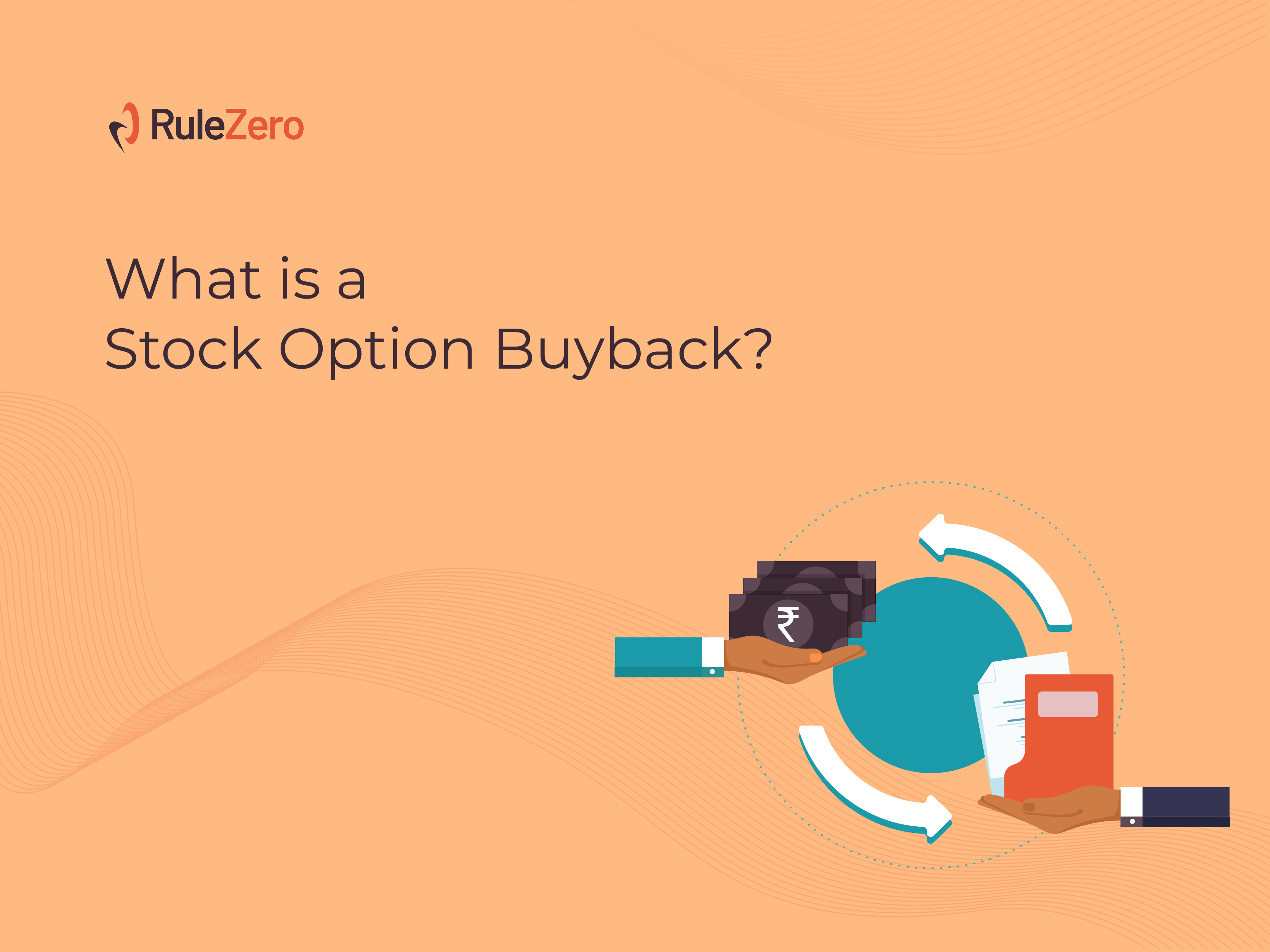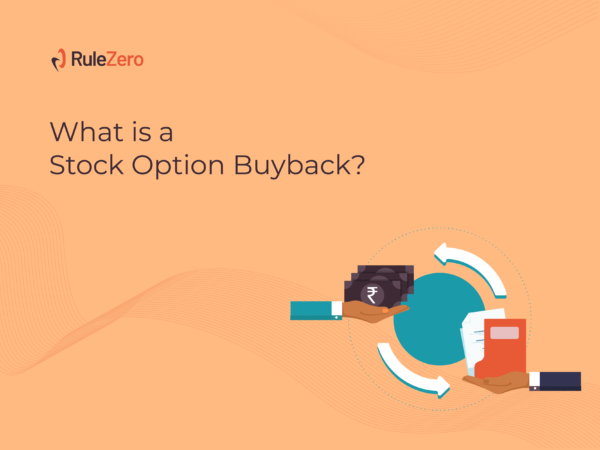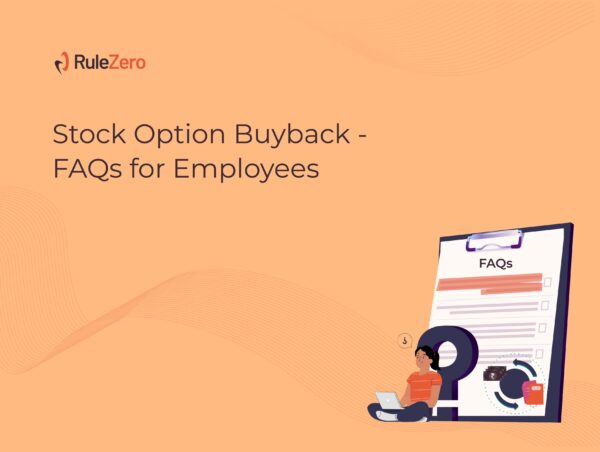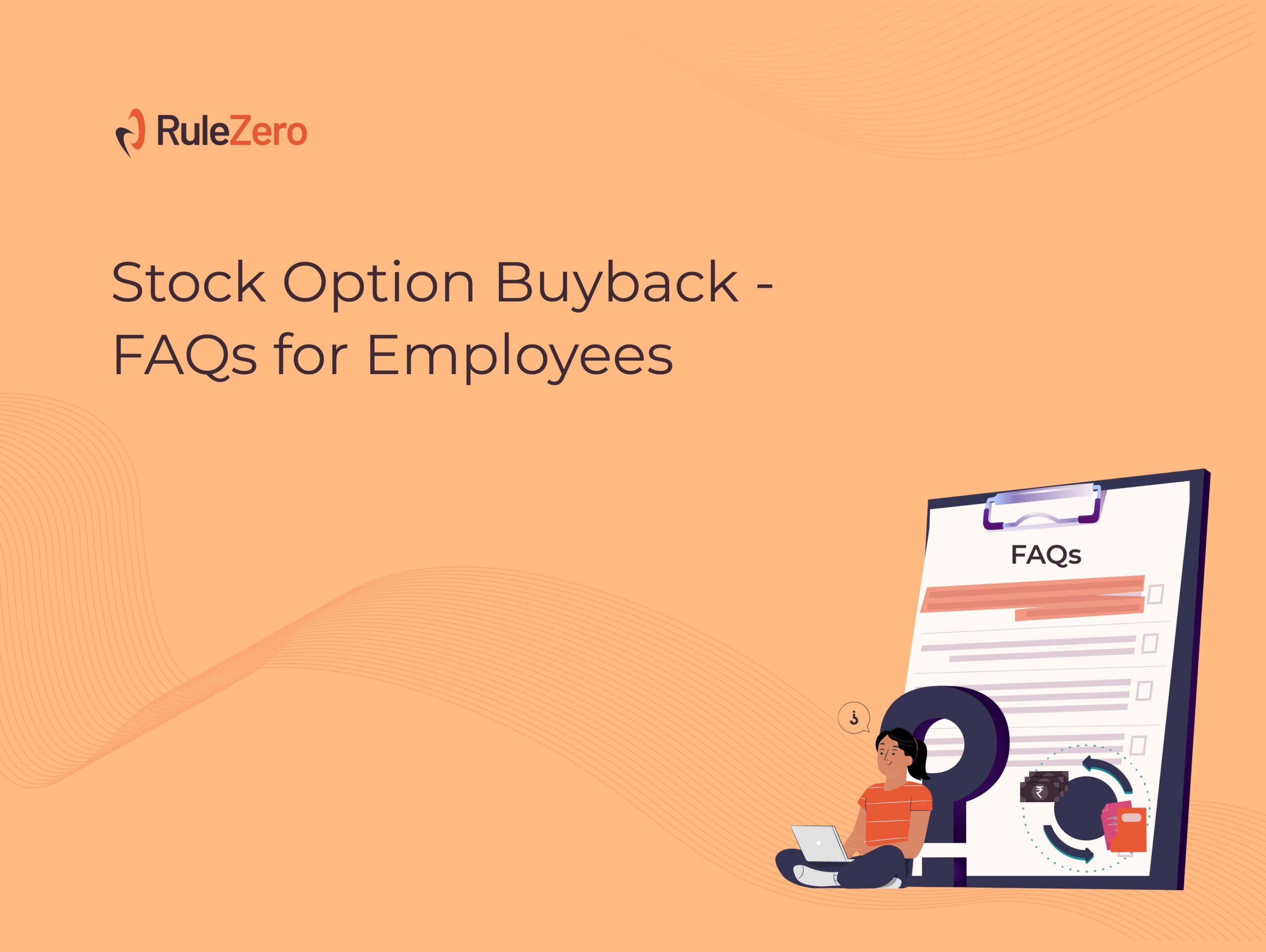Stock options are creating wealth for employees like never before. Why is this? Companies are growing at unprecedented rates. Some companies have achieved unicorn status in as little as a year. As a company’s value increases, so does its share price. Since returns on stock options are directly related to share prices, employees have been able to turn their options to wealth. Classic examples of this being – Zerodha, Meesho, Swiggy, UrbanCompany , Spinny, Ninjakart and so on.
In this post, we examine one strategy that has been making the most noise in wealth generation for employees, namely, option buyback by way of cancellation/ surrender of options by employees.
Stock Option Buyback - the what
When a company buys vested stock options from its employees for cash by way of cancellation/ surrender of vested options, it is called an option buyback (often called ‘ESOP buyback’). The company’s board decides the price offered to buy back the options and it’s usually the fair market value (FMV) of the company’s shares. It will be pertinent to note that buyback of options is different from buyback of securities under the law, however ‘buyback of options’ has of late become the most popular phrase to refer to buyback of options.
The company may decide to buy back the options of all or a section of its employees. For example, vested options of only employees in management may be bought back. This decision is completely up to the board and is based on the company’s business strategy.
Stock option buyback by companies - the when and why
- Liquidity: The mere grant of options does not result in returns. Stock options must vest and then an employee must exercise those options for them to see tangible returns. However, there is a waiting period before which options can be exercised. This is called a vesting period. The standard vesting period is four years. To keep the employees motivated and not just show returns on paper, companies may decide to buy back vested options. This gives employees satisfaction and confidence, reducing employee attrition.
- Termination of employment: If an employee is leaving a company, then their vested options may be purchased to avoid the employee from becoming a shareholder at a later point in time. It’s not ideal to have an ex-employee sitting on the company’s cap table.
- Company restructuring: If a company plans an IPO or a merger or acquisition occurs, options may be bought back. In such cases, companies may also accelerate vesting and buy back vested options.
- Keeping the cap table clean: Options may be bought back of former employees to avoid having them on the cap table at a future point in time. To avoid the additional operations that come with this, many companies are now purchasing the options at the time of exit.
Employees earning from an option buyback programme and tax implications - the how
The difference between the buyback price and FMV of shares on the date of the buyback is considered a perquisite in the hands of the employee. If a company has done well and the price of shares has gone up, the perquisite earned on this difference can be exponential. Tax is paid based on the rate of income tax applicable to the individual.
For example, if the exercise price for each share is INR 10, buyback price per share INR 500, and the employee holds 50 vested options, the earnings will be calculated as follows:
Amount payable by employee to purchase shares (strike price): 50*10 = 500
Buyback price: 500*50 = 25,000
Perquisite amount = 25,000 – 500 = 24,500
Tax will be payable on INR 24,500 by the employee.
What should companies keep in mind when making an option buyback offer?
Companies must pay attention to the following to initiate the buyback offer:
- Buybacks are often funded when companies have excess cash reserves. Hence companies must strategies the buyback after ensuring that there is sufficient cash reserve to meet all operational expenses.
- An important component of a buyback offer is determining the fair market value (FMV) of the shares of the company. For this, companies must appoint a recognised valuer to set the FMV of shares.
- The board must decide which employees will receive the offer and to what extent vested options will be bought back.
- Ensure necessary corporate approvals are obtained before the offer is made.
- A buyback offer letter must be sent to the employees with all the terms of the offer.
- Ensure adequate time is provided to employees to consider and make a decision pursuant to the offer made. Have a session with all the employees before the buyback, explaining how the buyback will work.
- The buyback offer must be clearly mentioned who will pay the tax on the gains (perquisite).
- Ensure all documents that employees need to sign are executed, including their acceptance for the offer. At the same time keeping confidentiality is important.
How is option buyback different from share buyback?
- Under option buyback, vested options are bought back and these options are added back to the company’s stock option pool. Usually, these options are bought back at a price equal to the fair market value of the company’s shares on the date of purchase. However, the option buyback price may differ depending on why the company is buying back the options. A share buyback is when shares are bought back from a company’s shareholders.
- Unlike a buyback of shares, in which only 25% of the paid-up capital can be bought back, option buyback has no such threshold limit. All vested options can be bought back from all employees.
- After a share buyback is completed, a minimum of 6 months must pass before the next share buyback can be initiated. Buyback of options can be undertaken as often as the company likes, as long as it has cash reserves.
Stock option buybacks have become a common way of providing liquidity to employees of start-ups and other established unlisted companies. This trend is gaining strength.
For more information, refer to our FAQ section on option buyback.









